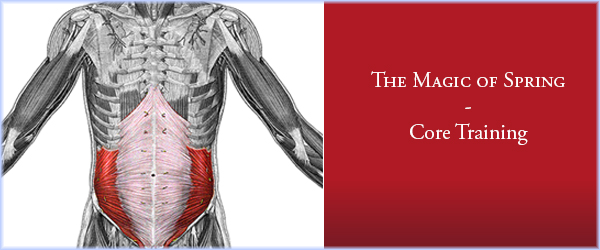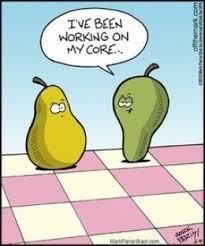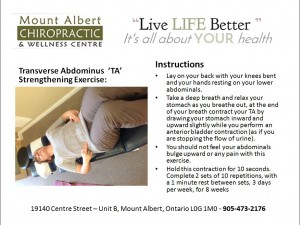The Magic of Spring! Core Training
Posted by Laura Smith, RMT on Mar 12, 2015 in Blog | 0 comments

Can you feel it? It’s coming! It’s a break from the tough slog of winter that we’ve grown used to over the past few months. We have a little skip in our step and a spike in our energies that was maybe missing for all of the month of February. I can feel it, and am just plain giddy about it! It’s time to shed our inertia, and dare I say the ‘e’ word? Yes, exercise. More than this though, exercise with purpose. As you plan out your new exercise regime for this coming spring, why not start with core training?
 Core building is so important, for those of us who have chronic back pain, building strength in the deepest muscles of your back and abdominals can be an important part of your remediation process. Want to get started? Let’s begin with your Transverse Abdominis!
Core building is so important, for those of us who have chronic back pain, building strength in the deepest muscles of your back and abdominals can be an important part of your remediation process. Want to get started? Let’s begin with your Transverse Abdominis!
“The Transversus Abdominus (TA) is your deepest abdominal muscle. It runs horizontally across your stomach and when it contracts it acts like a girdle providing stability to the low back and pelvis. Research has demonstrated that TA contracts before all other abdominal muscles (Hodges PW, 1997) , allowing TA to stabilize and protect your spine before the outer abdominal muscles produce movement.
Research has also shown that injury to this muscle or to the low back inhibits the activity of TA. In the presence of pain, TA contraction is delayed (Hodges PW, 1996) which leads to a reduction in stability for the lumbar spine. Retraining the TA so that the correct motor pattern is restored is necessary to ensure full return to function.” (Hayes, 2014)

